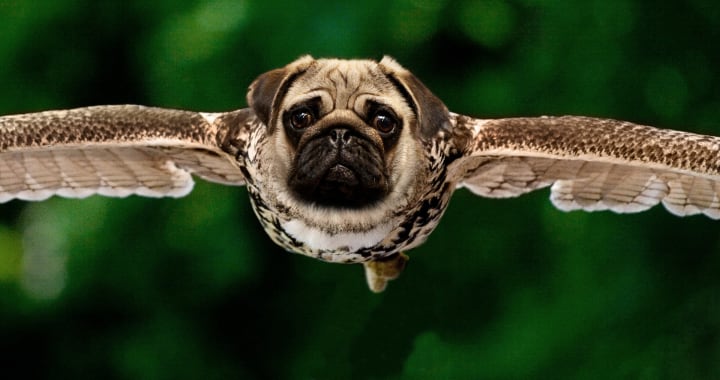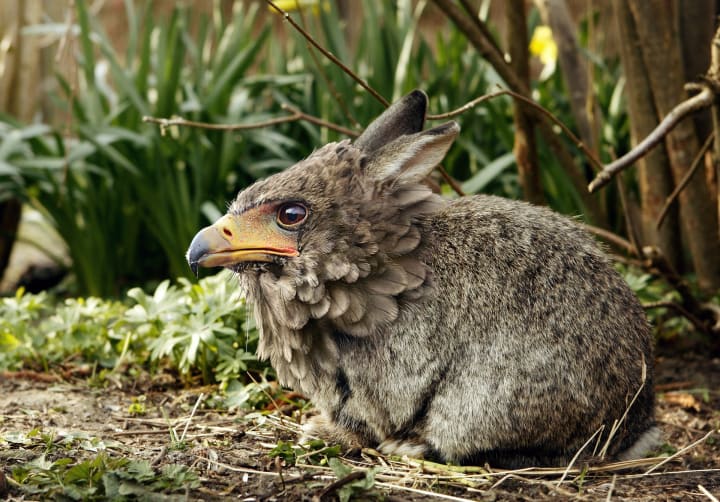Freakquent Fliers
Birders, twitchers and bird watchers everywhere will never look at their feathered friends the same way again after taking a gander at A Field Guide to Little-Known and Seldom-Seen Birds of North America

Every so often — once in a blue moon, literally — a handbook comes along that is Absolut-ly 100% indispensable to any self-respecting bird watcher.
No twitcher worth their salt can possibly do without the 2nd edition of A Field Guide to Little-Known & Seldom-Seen Birds of North America, Cathryn Sill and Ben Sill’s follow-up to their wildly successful 1st edition, which had tongues all a-twitter from the Blackwater National Wildlife Refuge in Maryland to the Point Reyes National Seashore in California.
According to the jacket notes, the 2nd edition, which features illustrations by John Sill that would put John James Audubon to shame, has been “partially revised and somewhat updated.” And it shows.
First, a history lesson. When the 1st edition of Field Guide was originally published, the birding community didn’t quite know what to make of it.
Many of the new species sounded like real finds, but there wasn’t much scientific data to support the findings.
No matter.
As the Sills point out in their foreword to the new(ish), partially revised edition, “We’re not too proud that the mistakes made in the first edition were the editor’s fault.”
But of course. You can never find a good editor when you need one.
“The present guide,” the Sills helpfully inform us in their introduction, “clearly elucidates where newer studies have shown that original characteristics of certain species were incorrectly interpreted as being mistakenly accepted as unconfirmed fact.”
There you have it, then.

The 2nd edition was going to be renamed A Field Guide to Little-Better-Known and Less-Often-Seldom-Seen Birds of the Western Hemisphere, Particularly North of the Tropic of Cancer, South of the Arctic Circle, and Focused on North America, North of the Mexican Border and Extending Somewhere Into Canada, but the publisher nixed that idea.
The publisher — that killjoy — cited something about how the title would look confusing on book shelves, which wouldn’t have helped sales one whit.
An instant grabber and word-of-mouth count for everything where book sales are concerned. Handbooks are supposed to fly off the shelves, figuratively if not literally, and that’s hard to do if the potential buyer has to figure out the title first.
A Field Guide to Little-Known Birds follows the time-honored format of all popular birding books: a general description of the bird’s appearance; observation of its habitat, range and signature song; and at least one confirmed sighting and identification by a respected birder in the family.
A Field Guide has managed to scoop many of the bigger, better-known field guides on the market today, as few of those guides feature little-known and seldom-seen bird species. The Sills have clearly done their homework, or field work, if you will.
The guide’s list of acknowledgments is disarmingly honest — honest to a fault, you might say — as in the note of gratitude extended to “those individuals who used prepublication of copies of these updated field guide for actual verifications,” before adding, “However, when their data did not agree with our opinions, we deleted them.”


Now that’s hardcore. Scientific journals be warned: To hell with peer review.
And so readers learn about the gila gull (El larus precipitatus), commonly found in storm-prone areas of Texas. “A secretive bird,” Field Guide reliably informs us, “it is typically observed only while feeding in flash-flood areas.”
The notation features such helpful advice as, “Monitor an Internet weather site and when thunderstorm warnings are issued, travel immediately to the nearest gulch or arroyo . . . and erect an observation blind. Be sure to note the previous high-water marks.”
There are more birds where the gila gull came from, from the great-toed clapboard pecket to the Eastern narrow sparrow (hard to see when he truns sideways. Never have so many little-known, seldom-seen birds been identified and described so often and in such elaborate detail for so many casual and serious birders alike.
The jacket blurbs are appropriately enthusiastic, as jacket blurbs tend to be. “This guide may well signal the end of routine birding behaviour,” says ‘North American ornitholigst.’
‘Field biologist’ calls it “(an) excellent reference work. It should stay on every birder’s bookshelf,” while ‘Tour leader’ gives it the highest praise: “A must in the field, and it’s difficult to lose.”
Yes, by the way, the book is real. It actually exists, and is available on Amazon and through the usual reliable, reliably informed private booksellers. And why not? Books like this only come along once in a blue moon.
•
There are some great Facebook groups for Vocal writers like the Vocal Creators Lounge if you want to be more active in the community.
https://www.facebook.com/groups/503959543406774
The Creators Lounge and others like it are good places to share and get feedback about your work, or find encouragement when you’re struggling with a piece.

About the Creator
Hamish Alexander
Earth community. Visual storyteller. Digital nomad. Natural history + current events. Raconteur. Cultural anthropology.
I hope that somewhere in here I will talk about a creator who will intrigue + inspire you.
Twitter: @HamishAlexande6






Comments
There are no comments for this story
Be the first to respond and start the conversation.